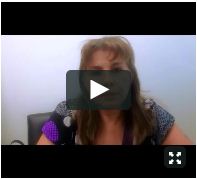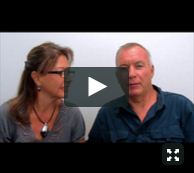Noel: What do the Irvine Company, McDonalds and our lovely President have in common?
Audience: They don’t pay taxes.
Noel: (laughing) Great. (Laughing) They’re a billion dollar real estate investors. And you might be wondering, how in the world were they able to do that?
Noel (cont’d): Simple.
Noel (cont’d): They took advantage of the most powerful real estate tax strategies.
Noel (cont’d): They use the powerful tax code to zero their taxes.
Noel (cont’d): As you can see, IRS is their friend. Is IRS your friend?
Audience: No!
Noel: No? Well, then in the next few minutes you’ll discover 5 ultimate tax secrets to zero down your taxes.
Noel (cont’d): It’s called (picks up piece of paper from table) – the LDDER Approach. That if you apply (puts paper down on table) you will zero your taxes.
Noel (cont’d): So you can pay zero and become
Noel (cont’d): the hero.
Noel: Are you guys ready –
Audience: Yes.
Noel: To become the hero?
Audience: Yes.
Female voice: Always.
Noel: Let’s do it. The first L (picks up paper from table) stands for like-kind exchange. Raise your hand if you’re familiar with like-kind exchange.
Noel: Great! (puts paper on table). A like-kind exchange allows you to postpone your taxes by exchanging up to a higher price property. It’s a way to consolidate your real estate portfolio…
Noel (cont’d): Or to – to minimize your taxes by building up your portfolio. It’s a two-step process.
Noel (cont’d): One – you got to sell the property. Number two, you have to re-invest the cash proceeds.
Noel (cont’d): I have a client. His name is Rich. He started with one triplex twenty years ago.
Noel (cont’d): Guess what he ended up with right now?
Noel (cont’d): Apartment buildings.
Noel (cont’d): He started with a triplex. Now it’s worth I think ten million dollars.
Audience: Wow!
Noel: Here’s a strategy that you may not be familiar with. Once he passed away,
Noel (cont’d): and that property transferred to his survivors – which might be the kids – his starting number which he bought way back, I think like half a million dollars. The starting numbers of the beneficiaries – or the kids – is not half a million dollars.
Noel: Its ten million dollars. So, if the kids decided to sell the property the next day for ten million dollars, guess – what’s the tax for the kids?
Audience: Zero?
Noel: Zero (makes symbol of 0 with his hand). What is the strategy called? It’s called the 3D. It’s defer – defer – and die. Remember that.
Noel: (laughing) Very powerful concept! The next one, the D (picks up paper) – stands for depreciation. (puts paper down) Depreciation allows – it’s a deductible expense for the wear and tear of the property. What is the plus? It’s a paper loss. There’s no money coming out of your pocket. I have – I have a client, Rich, I met 15 years ago. He went to my office and he said, “Noel, can you review my taxes?” And I said, “What do you have?” He said, “I only got like 2 rental properties.” And I was thinking, ‘Aah, that’s gonna be easy.’ I sat down and look at the schedule E form line one, gross rents – one million dollars. I said, “Whoa, what do you have?” “Well, I’ve got two apartment buildings.” It just gets better. One million dollars gross rent. Rental expenses, eight hundred thousand dollars.
What’s the rental income?
Noel (cont’d): Two hundred thousand dollars – on his pocket – doesn’t fit over here (demonstrates his pants pockets). But, he’s got two hundred thousand dollars cash in his pocket. Now, here’s the kicker. I told you about depreciation, right? His depreciation was two hundred fifty thousand dollars. What’s his loss showing on the return? Fifty thousand dollar loss! I was looking at him and said, “You’re putting two hundred thousand dollars in your pocket? And you’re showing 50K of losses.” And, I was thinking, ‘Man, this is too good to be true.’ But, it was there.
Noel (cont’d): So, take advantage of that depreciation to maximize if you have rental properties. (End of Part 1)




